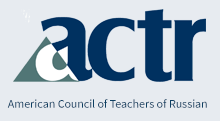Russian Language Journal
Keywords
technology, language, alphabet, technological changes
Abstract
The spread of digital technology has created new conditions for the existence and development of languages. The East Slavonic languages Belarusian, Russian, and Ukrainian are excellent examples. Since the Internet originated in the U.S., and since most computer devices are created on the basis of languages that use the Latin alphabet (i.e., English), people who use other alphabets, such as Cyrillic, face additional challenges in adapting to the new technological realities (Sproat 2010).3 In this article, I shall focus on how digital technology challenges Cyrillic, as the alphabet in which the East Slavonic languages are written.
The consequences of similar technological changes have been studied by media theoreticians such as Marshall McLuhan and Friedrich Kittler. Both have made strong claims for the influence of technology on the human condition. In this article, I discuss recent technological changes in the light of what has been referred to as a “technological determinism” in the works of McLuhan and Kittler. Thus, the aim of this article is to discuss conceptually the implications of the new technology on the three East Slavonic languages.
Recommended Citation
Paulsen, Martin
(2011)
"Digital Determinism: the Cyrillic Alphabet in the Age of New Technology,"
Russian Language Journal: Vol. 61:
Iss.
1, Article 8.
Available at:
https://scholarsarchive.byu.edu/rlj/vol61/iss1/8

